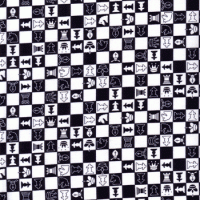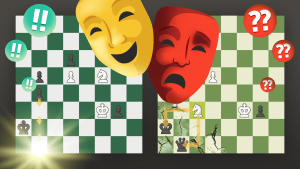First of all, let me thank you my dear readers for your positive response for my "Typical patterns everyone should know" articles. It shows that you want me to continue our discussion of this important subject. Today's installment is devoted to 'enhanced Greek Gift Sacrifice'. Chances are you never heard of this term. That's because I just made it up myself in order to distinguish this pattern from the common "Greek Gift sacrifice". So, first lets refresh what the regular "Greek Gift sacrifice" is. This classical pattern is fairly simple: you play Bxh7+ and after your opponent recaptures the Bishop with his King (Kxh7) you play Qh5 and Ng5 (in any order) and create threats to checkmate him by Qh7. The key feature of this sac is that there is usually no defense against Qh7 so in many cases White has the e5 pawn that prevents possible Nf6 defense. Lets see the simplest case of this combo. ( Just like in all my previous articles, the examples are given as a quiz, so you will understand and remember the pattern better).
I am sure that the majority of chess players know this pattern very well, since it is widely popular (even wikipedia.org has an article about it, just type "Greek Gift sacrifice"). What I am going to talk about today is slightly different. Yes, it involves the Bxh7+ sac, but there is a twist. What if the g5 square is covered (usually by Be7), so if you sac Bxh7+ and then play Ng5 your opponent simply eliminates the Ng5 by Bxg5? Still, you can make it work but there is a very important trick everyone should know. And that's what I call 'the enhanced Greek Gift Sacrifice'. First mention of this trick can be found in XVI century manuscript by Polerio. It gives the next game:
And here is the similar attack played about 400 years later :)
Now lets see what happens when Black plays f6 trying to increase control over the key g5 square.
An attack after the Bxh7 sac is usually so strong that sometimes White has luxury to play 'quiet' moves and yet deliver a checkmate. Here is a good example:
As you could see, the little h4! move makes a huge difference in many cases. So next time you have Bd3 and Nf3 looking at your opponent's castled King and the regular 'Greek Gift sacrifice' doesn't work, look at the h4 idea since the 'enhanced Greek Gift Sacrifice' can be even more powerful than the regular combo.
Good luck!


